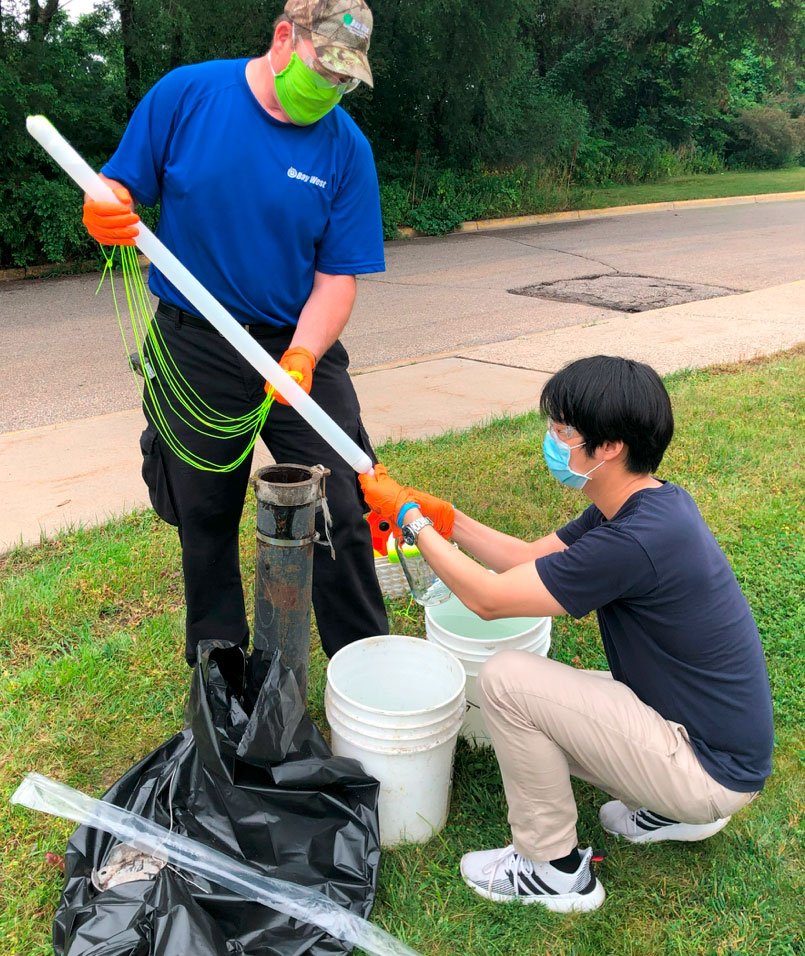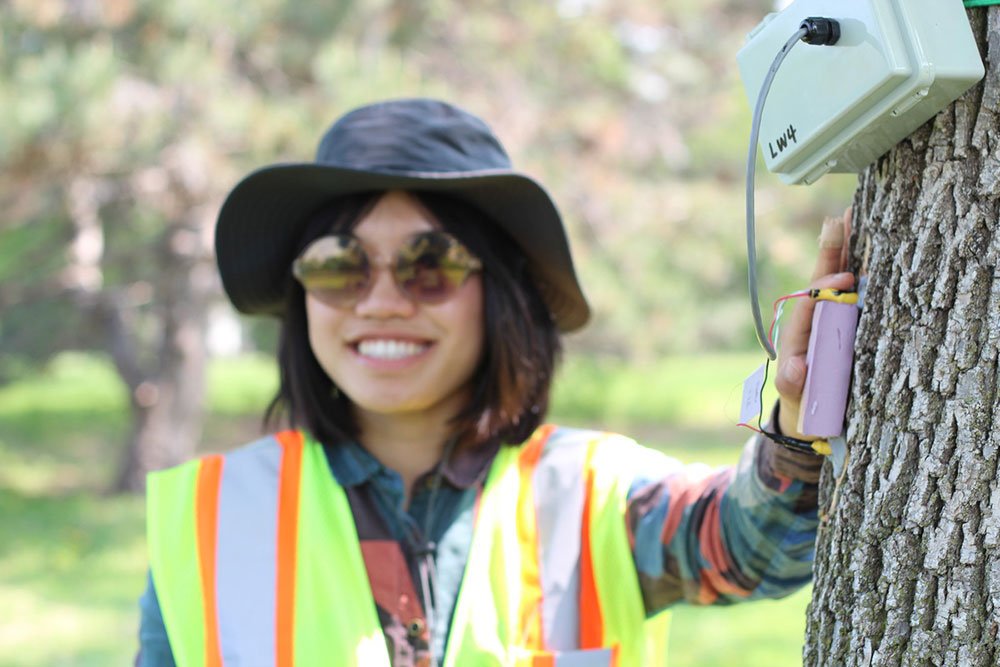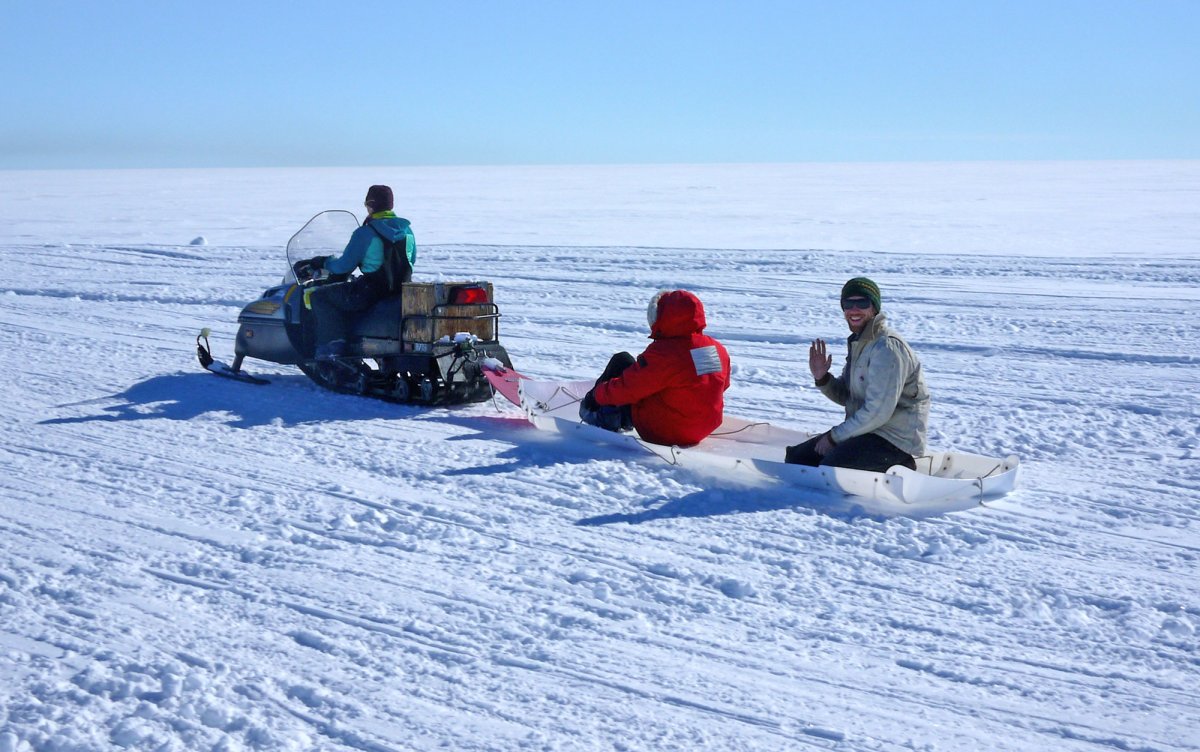Sustainable Water

Mighty Mississippi
SAFL researchers leverage the 50-foot drop in the Mississippi River to study water quality, fluid mechanics, renewable energy, and how it all affects the residents of and environment within the Twin Cities.
It's way more than water under the bridge
About 1,200 liters of water per second flow from the Mississippi River into SAFL’s channel and floodplain, through a sediment settling basin, and back into the river. This flow through the lab provides a multitude of research opportunities.
Wake surf waves
As part of St. Anthony Falls Laboratory’s (SAFL) Healthy Waters Initiative, CSE researchers are studying how waves from boats used for the popular sport wake surfing affect shorelines in Minnesota lakes. By measuring wave height and power from these boats, the researchers found that wakesurf boats produce higher waves than typical boats and are more likely to cause lakeshore erosion.
An artificial stream
Adjacent to St. Anthony Falls Laboratory is the Outdoor StreamLab. The large-scale stream and floodplain was built in 2008 with no particular stream in mind but to mimic the flow of meandering stream channels that one might find in Minnesota.
Because it’s open to both the natural elements and experimental control, the facility is ideal for studying topics like ecological roles of streams, flood control, and stream restoration. Research projects include how sediment affects invertebrates and fish, and how vegetation affects the retention of flood water.
Recently, the Outdoor StreamLab underwent a renovation that included machinery to move heavy instrumentation, safety upgrades, and WiFi to support researchers in data analysis.
Committed to clean
Researchers tap fungi and partner with two city utilities for better water quality
Of all the harmful effects of climate change on our planet, water quality is one of the most pertinent. Extreme rainfall can lead to stormwater management issues and increased pollution from nitrogen runoff, and rising temperatures cause toxic algae to bloom in our lakes. To address these water quality issues and more, a swath of CSE researchers are turning to chlorine, trees, and… fungi?
Yes, fungi. According to CSE Associate Professor Peter Kang, the spore-producing organisms can actually lend a hand in purifying contaminated water systems.
“One of the major challenges that groundwater scientists face is remediating contaminants that slowly diffuse into rock and trap there for long periods of time,” he said. “And it’s really hard to extract them. So, our idea was utilizing branching fungi to actively grow and penetrate into this porous rock to access the contaminants.”
Kang’s project is funded through Minnesota’s Discovery, Research, and InnoVation Economy (MnDRIVE) program, a University partnership with the state. His lab is also working on a variety of groundwater-related problems, including another MnDRIVE-funded endeavor to mitigate the clogging of biofilms in an underground aquifer on the University’s West Bank. The work was recently published in the Proceedings of the National Academy of Sciences.
“A better understanding of fluid flow and subsurface systems is key to addressing global climate, water, and energy issues,” Kang said. “Nearly 99 percent of unfrozen freshwater is stored in the form of groundwater, and Minnesota, for example, relies a lot on groundwater systems, so it’s important for both our state and beyond.”
Minnesota actually provides a unique platform for studying water quality, thanks to the proximity of its two major cities—Minneapolis and St. Paul. Civil engineering Professors Ray Hozalski and Tim LaPara have been working closely with the two cities’ water utilities departments for years now to study water quality and implement solutions for cleaner water across the metro area.
Some of their larger projects involve finding ways to prevent harmful bacteria (such as Legionella, the water-borne culprit behind a severe form of pneumonia) from building up in the water supply. They were recently one of four teams in the United States to receive a $2.1 million grant from the U. S. Environmental Protection Agency (EPA) to study the occurrence of opportunistic pathogens throughout the country’s water distribution systems and find out how cities can balance levels of chlorine in water to combat these harmful organisms.
“Minnesota is a great place to do what Tim and I do,” Hozalski said. “It’s particularly exciting to work with Minneapolis and St. Paul water utilities because we can do fundamental academic work that gets published in top journals, and we’re also solving real world problems at the same time. This, along with the resources, facilities, and our talented students at the University, have enabled us to be really, really successful.”
One of those talented students is water resources engineering Ph.D. candidate Xiating Chen. She is working with colleagues in the University’s Department of Forest Resources as part of NSF’s Minneapolis-St. Paul Urban Long-Term Ecological Research program to study how ash trees treated for emerald ash borer infestations respond to a range of urban environmental conditions
Her advisor, Associate Professor Xue Feng, recently received an NSF CAREER award to learn more about how global water, carbon, and energy cycles are affected by plants.



Snapshots in the ice
When earth scientists study ice, they’re not just monitoring ice melt spurred by the planet’s inevitable warming. Frozen water, whether it’s part of glaciers in the mountains or ice sheets in Antarctica, contains an entire world of information that can give us a detailed history of how the Earth has changed over time. Researchers at the University of Minnesota are at the forefront of this research, and they’re using cross-disciplinary methods to do it.
Electrical engineering Professor Joey Talghader’s research focuses on optics and optoelectronics, or detecting and controlling light using electronic devices. Working with colleagues at the University of California-Berkeley, Talghader helped build a borehole logger—an instrument that can be lowered into drilled ice holes to measure layers of ice and identify their optical properties.
“Counting and identifying layers in ice is a bit like tree ring dating,” Talghader explained. “If layers from one ice core can be matched to layers in another, we can date climate events to a very small period of time, sometimes even to a single relative year. With this information, we can start to better predict the many variables that affect our climate.”
Talghader isn’t the only one at the University of Minnesota tapping into the power of ice.
Sara Nadian, a junior studying earth science on the Twin Cities campus, spent a semester analyzing old ice cores from Greenland through Research Assistant Professor Joel Barker’s Polar Biogeochemistry Lab. Her project studied the detrimental effect meltwater can have on our ability to date ice by analyzing the chemical remnants in the ice.
“I had no idea how much information you could get from just two meters of ice,” Nadian said. “It was really cool for me to take what I learned in class and apply it to research. We have really amazing professors in the earth science department who have literally invented the things that a lot of geologists around the world use to date rocks and ice, so there are a lot of opportunities to get involved here.”


